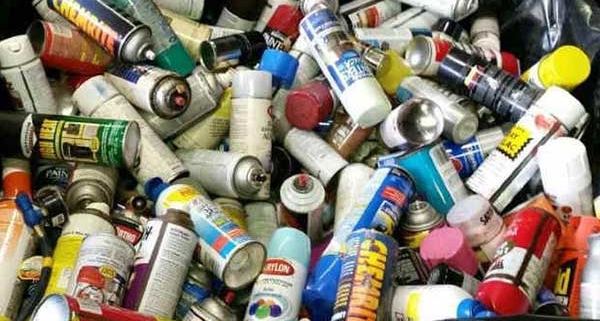Summary of Hazardous Waste
Hazardous waste mainly includes industrial waste and medical waste. Industrial waste accounts for more than 70% and medical waste accounts for about 14%. Among the industrial hazardous wastes, 30% are waste acid and alkali, 14% are asbestos wastes and 10% are non-ferrous metals smelting wastes. In the source industries, 19% are chemical raw materials and products manufacturing, 15% are non-ferrous metals smelting, 14% are waste metals mining and processing, and 13% are paper industry. According to the 2016 edition of the National Hazardous Waste List, the categories of hazardous wastes can be optimized and reduced, and they can be divided into 46 categories and 479 categories.
The principle of hazardous waste disposal is harmless disposal and resource utilization. The basic disposal methods include classification, pretreatment and final disposal. Wastes with recycling value such as metals, grease, solvents and dyes can be recycled; pretreatment includes physical, chemical and physicochemical solidification. The hazardous waste after pretreatment can enter the process of harmless disposal, including incineration, landfill and physicochemical. Rotary incinerator is also listed as the most commonly used method of harmless disposal.
Characteristics of hazardous waste:
1) Having one or more dangerous characteristics, such as corrosiveness, toxicity, flammability, reactivity or infectivity;
2) Hazardous characteristics are not excluded, which may have harmful effects on the environment or human health.
Disposal methods of hazardous wastes
The harmless disposal of hazardous waste is mainly incineration and landfill. Incineration technology can effectively remove toxic and harmful components in hazardous waste, reduce the hazardous components to 5%, fly ash and some physicochemical products produced by incineration can not continue to reduce the amount of waste to landfill. Compared with landfill, incineration is more land-saving and more suitable for China’s national conditions. At present, it is the most widely used technology in hazardous waste disposal.
The process of hazardous waste incineration is more complex. New technology research and project construction of hazardous waste incineration are synchronized. The hot technologies are pyrolysis gasification, molten salt technology, power reactor and plasma system. At present, the main technology is rotary kiln incineration. Rotary kiln is the main type of hazardous waste disposal furnace at present because of its adjustable speed, continuous operation, flexible control, automatic feeding and slag discharging, and adaptability to solid, liquid and semi-solid waste. Hazardous waste is incinerated at high temperature in the first and second combustion chambers. The flue gas generated by incineration is recovered by waste heat and then cooled by quench tower, adsorbed by activated carbon, dust removal by bag filter, acid and alkali neutralization of absorption tower and then discharged through chimney. After stabilization and solidification of incineration residue and fly ash, it is disposed of in landfill.
Advantages of Rotary Incinerator in Hazardous Waste Disposal
Rotary incineration kiln is a widely used incineration equipment in the field of international industrial waste treatment. Its market share in the field of industrial waste incineration is about 85%. It can treat solid and liquid waste simultaneously. Solid waste is fed into rotary kiln by special conveying equipment. The process of water evaporation, volatile matter precipitation, ignition and combustion is completed in rotary kiln. Ash and slag are discharged from kiln tail discharging device. The generated smoke enters the second combustion chamber and mixes with the secondary combustion air in the second combustion chamber to achieve complete combustion of the smoke and achieve safe emission of the tail gas. Rotary kiln incinerator is characterized by wide adaptability to waste, simple operation and maintenance, and long service life.
Characteristics of Rotary Incinerator for Hazardous Waste Disposal:
1.Rotary incinerator can incinerate solid waste, liquid, colloid and gas at the same time, which has strong adaptability to incinerators.
2.High temperature materials contact refractory materials, easy to replace lining, low cost;
3.The shape and moisture content of incinerator are not required.
4.Rotary kiln is in a negative pressure state in operation, which avoids harmful gas spillover when dealing with hazardous waste, and because the equipment is well sealed.
5.The incineration material flips forward, three heat transfer modes coexist in one furnace, and the heat utilization rate is high.
6.The transmission mechanism is simple, the transmission mechanism is in the kiln shell, and the equipment maintenance is simple.
7.Equipment operation rate is high, the annual operation rate can generally reach 90%, easy operation and maintenance;
8.The residence time of materials in rotary kiln is more than 1 hour, and after high temperature above 850 C, the hazardous waste is decomposed and transformed basically. The high temperature combustion in the second combustion chamber (1100 C) and the residence time is longer than 2 seconds can reach the high temperature needed for the decomposition of harmful components and decompose thoroughly. Generally, the removal rate of organic matter by incineration is as high as 99%.
9.Generally speaking, the advantages of rotary kiln in dealing with hazardous waste are: environmental protection, energy saving, safety, and certain economic benefits.
Luoyang Building Material Architectural Design Research, specializing in industrial kiln design, committed to a variety of waste disposal solutions, and provide a complete rotary kiln incineration treatment process package, we have manufacturing factories throughout the country, can provide a complete set of system equipment components, to ensure that the plant equipment configuration is reasonable, scientific and economic, with the best service to meet your plant building needs.



